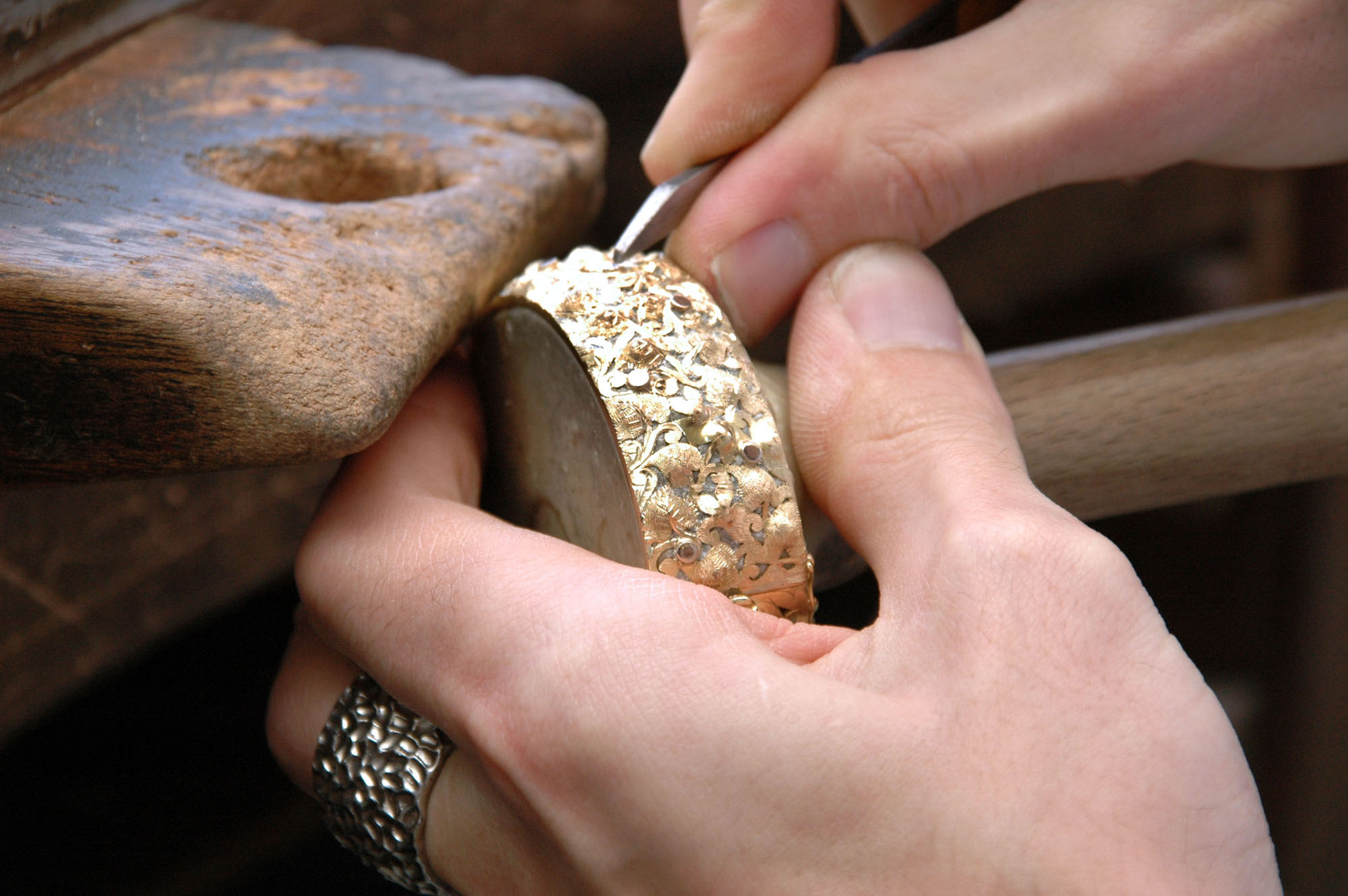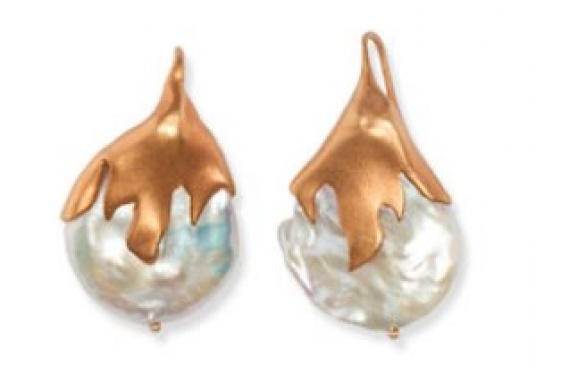

The Abruzzo region is a land of ancestral traditions and deep-rooted culture, renowned for its goldsmithing — an art that draws on ancient engraving techniques and the use of magical symbols. The locally made jewelry is rich with references to ancient symbolism, legends, superstitions, and age-old rituals meant to bring good fortune.
Goldsmithing is still a vibrant tradition in Abruzzo, closely tied to the region’s historical and cultural identity. Sacred objects — true masterpieces of exceptional beauty and craftsmanship, such as processional crosses, chalices, and Eucharistic monstrances — showcase the work of artists like Nicola da Guardiagrele and reflect Abruzzo’s profound spirituality. Through the art of goldsmithing, one can trace key aspects of Abruzzese traditions and community life.
Gold, silver, and precious stones have long held symbolic and sacred meaning, often linked to rituals and ceremonies. These materials were not just decorative — they served a protective, almost magical function. Many traditional jewels had apotropaic purposes, meant to ward off evil influences and curses. Earrings, for example, were believed to protect against the evil eye, and their jingling sound was thought to drive away malevolent spirits.
Carnelian, often set in filigree arabesques or mounted in rings cast in cuttlefish bone molds, was believed to protect one’s health. The Presentosa, a star-shaped medallion worn on the chest, was thought to guard the heart. Traditional jewelry was crafted using techniques like filigree, casting, repoussé, and chasing, and these methods are still used today in workshops and artisan studios throughout the region.
Among the most iconic pieces of Abruzzese jewelry are:
- The "cannatora", a choker-style necklace made either with filigree beads or embossed metal sheets decorated with tiny granules.
- The "ciarcèlle" or "sciacquajje", boat-shaped earrings made using openwork designs, often featuring central motifs such as grotesque faces, birds, or floral elements — symbols of prosperity and abundance (especially from towns like Pescocostanzo and Scanno).
- The "Presentosa", a filigree star-shaped medallion with two hearts at the center — a traditional symbol of love and commitment.
In certain production centers like Pescocostanzo, Guardiagrele, and Sulmona, filigree remains the favored technique, while in others, such as Scanno, micro-casting and the use of silver are more common. Scanno’s jewelry often traces its roots to elements of traditional male and female costumes — buttons, clasps, and various adornments.
Filigree amulets were also widely crafted, especially in silver, and were traditionally reserved for children. These included charms like the little frog, St. Donato, the key, crescent moon, star, heart, and horn — each carrying symbolic protective meaning.
Even L’Aquila, a historic center of goldsmithing in past centuries, continues to thrive as a production hub. Today, alongside traditional designs, artisans are creating modern jewelry that blends creativity, research, and new technologies — keeping Abruzzo’s goldsmithing legacy alive and evolving.
You may be interested
-
“The Art of Bulgari: La Dolce Vita & Beyond,...
by Matthew Breen Fashion fans will be in for a treat this fall when the Fine Arts Museums...
-
L'Arte del Gioiello Italiano - Lecture and T...
How has Italy influenced the world of Jewelry? Join us for a special lecture on the a...
-
'A small New York': Palm Beach to become home...
Miami-born and Italy-raised, jewelry designer and accomplished equestrian Lucrezia Buccell...
-
'Saffron tourism' takes hold in Italy, harves...
Saffron tourism is the holiday of choice for a growing number of people fascinated by the...
-
‘Diva! Italian Glamour in Fashion Jewellery’...
With more than 200 pieces on display, the “Diva: Italian Glamour in Fashion Jewellery” exh...
-
‘My money goes a lot further here’: This woma...
After dealing with the death of her mother, losing her job of 10 years and finalizing her...
-
‘Path of Bandits’: Walking Through a Little-K...
150 years ago, at the border between the central Italian regions of Lazio and Abruzzo, the...
-
‘We made everything bear-proof’: the Italian...
Pettorano sul Gizio is a medieval mountain town full of alleys, watchful cats and wooden d...










